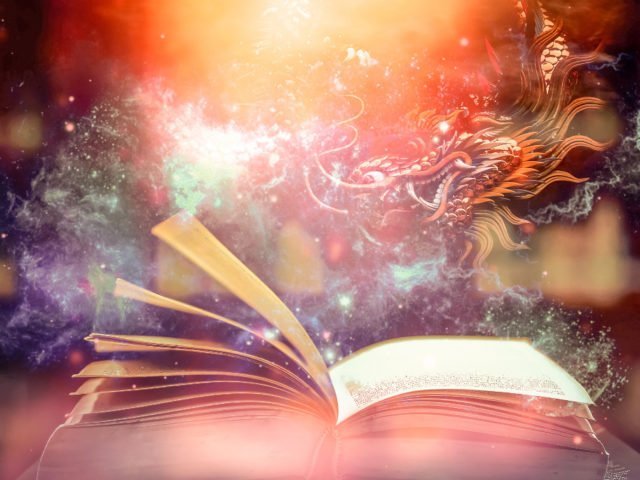Everyone loves a great fantasy story; from classics such as The Hobbit, Alice’s Adventures in Wonderland, and The Lion, The Witch, And the Wardrobe, to recent bestsellers such as Her Majesty’s Royal Coven, Nevernight, and Cinderella Is Dead, there’s something for everyone.
I’m the author of six fantasy books and have been writing this genre for over eight years. There’s nothing I love more than bringing the impossible to life!
Although writing fantasy can be so much fun, for first-time fantasy writers it can also be a little overwhelming.
So in this article, I will be sharing my top tips as to what makes a great fantasy book, and what to avoid. I will also be explaining how to write fantasy plots, craft characters, and build your fantastical worlds.
Before we start, let’s talk genre…
What Is The Fantasy Genre?
Fantasy fiction, in short, is fiction that centres around the impossible. That can include everything from talking animals, time travel, parallel universes, mythical beasts, and of course a compelling fantasy world full of magic.
Fantasy novels and sci-fi are often confused with one another as both genres involve things that don’t exist in the modern world.
The easiest way to differentiate the two is to remember that sci-fi tends to revolve around science and the environment (including dystopian end-of-the-world storylines, aliens, adventures in space, and anything involving technology), whereas fantasy is magical. Good old-fashioned magic that has no grounding in science.
Fantasy Subgenres
Fantasy is a very broad term that describes all fantastical literature, but as you can imagine there’s a big difference between a book set in an imaginary world full of elves and dragons, and a book set in today’s world but with characters that happen to be able to do magic.
This is why, with such a vast array of fantasy books available, the genre is split up into many subgenres (all of which apply to children’s books, middle grade and young adult categories).
- High/ Epic Fantasy
- Low Fantasy
- Portal Fantasy
- Urban Fantasy / Contemporary Fantasy
- Paranormal / Paranormal Romance
- Fantasy Romance
- Superhero fantasy
- Sword and Sorcery / Heroic Fantasy
- Medieval Fantasy / Arthurian Fantasy
- Historical Fantasy
- Comic Fantasy
- Science Fantasy
- Grimdark Fantasy
- Gothic Fantasy / Dark Fantasy
- The New Weird
- Speculative Fiction
- Horror / The Gothic
- Fairy Tales / Fables/ Fairy Tale Retellings
- Dystopian Fiction
- Magical Realism
Let us look in more detail at the three fantasy subgenres – epic fantasy, paranormal, and Gothic.
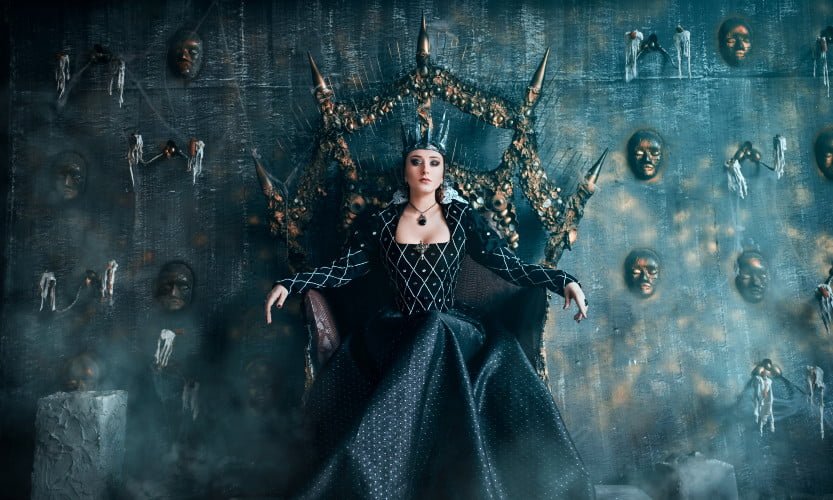
High/Epic Fantasy
According to The A to Z of Fantasy Literature, “high fantasy” was coined by Lloyd Alexander in 1971 and was further developed by Kenneth J. Zahorski and Robert H. Boyer, who stated that “high fantasy consists entirely of fiction set in secondary worlds, while the ‘low fantasy’ with which it is immediately contrasted consists of fiction set in the primary world.”
In other words, high fantasy novels contain very few things you may expect to find in the modern world.
- Instead of guns and cars, the bad guy may use magic and a flying monster to kill on the move.
- Instead of living in houses, the characters may live in holes in the ground, caves, or tree structures.
- Instead of being human, the book cast may be made up of elves, dragons, unicorns, and other mythical beasts (or creatures the author has made up themselves).
Because of the limitless possibilities in regards to what these worlds can contain, not to mention the world-building and backstories required to make them come to life, many high/epic fantasy novels are part of a fantasy series and they often contain an extremely high word count.
Examples Of Epic Fantasy Novels
- A Game of Thrones by George R R Martin
- The Hobbit and Lord of the Rings by J R R Tolkien
- Children of Blood and Bone by Tomi Adeyemi
- The Chronicles of Narnia by C S Lewis
- Eragon by Christopher Paolini
- Strange The Dreamer byLaini Taylor
- The Mists of Avalon by Marion Zimmer Bradley
- A Court of Thorns and Roses by Sarah J. Maas
Paranormal / Supernatural Fantasy
Paranormal fantasy includes supernatural elements. Instead of dragons and elves, you may have vampires, zombies, witches, werewolves, ghosts and any other creature that uses magic or defies death.
Normally these creatures persecute humans, and they can often live in the modern world. Other times the paranormal elements may be combined with genres such as romance, history, horror, and urban fantasy.
In my series, The Path Keeper (N J Simmonds), I have angels living amongst us. And in my co-written, paranormal romance novel Vampires of Moscow (Caedis Knight), our protagonist is a truth-seeking witch and undercover journalist investigating crimes in Russia’s paranormal hidden world.
Examples Of Paranormal Fantasy Novels
- The Once and Future Witches by Alix E Harrow
- Good Omens by Terry Pratchett and Neil Gaiman
- A Song Below Water byBethany C. Morrow
- Pet Sematary by Stephen King
- Vampire Academy by Richelle Mead
- City of Bones by Cassandra Clare
- The Twilight Saga by Stephenie Meyer
- Warm Bodies by Isaac Marion
Gothic Fantasy
The term ‘gothic’ in fiction is generally applied to fantasy and horror. With fantasy, the ‘fear and haunting’ aspect is connected to something supernatural and not of this world. Whereas with horror, it doesn’t have to have a paranormal element to it, the eeriness may simply be attributed to the protagonist’s psychological fears or another human.
For instance, the gothic novels Rebecca and Wuthering Heights are categorised as such due to the characters feeling haunted and the setting being so remote. But nothing fantastical is at play.
Generally, gothic fantasy books are set somewhere creepy; a forest, an old mansion, a deserted manor house, or a windswept, secluded location.
Gothic fantasy either involves magic and/or supernatural beings – think witches, vampires, or even a portal to another world. Many gothic classics have been retold by contemporary writers and given a fantastical twist (this is very popular in YA).
An example of this is Within These Wicked Walls(Lauren Blackwood) – an Ethiopian retelling of Jane Eyre.
Examples Of Gothic Fantasy Novels
- Interview with a Vampire by Anne Rice
- The Night Circus by Erin Morgenstern
- Dracula by Bram Stoker
- Gallant by V E Schwab
- Mexican Gothic by Silvia Moreno-Garcia
- Ninth House by Leigh Bardugo
- The Lighthouse Witches by C J Cooke
- Frankenstein by Mary Shelley
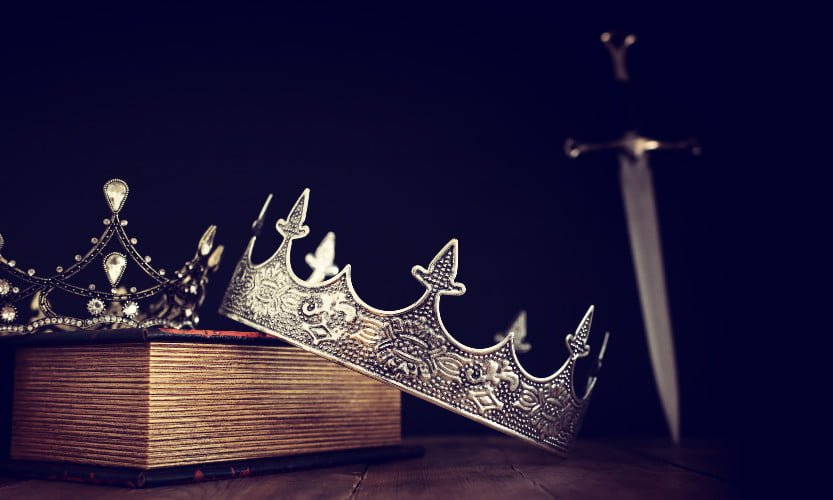
Fantasy Writing Styles
If you are about to start writing your first fantasy novel you may well be a little intimidated by the task ahead of you.
With so many fantastic fantastical novels gracing the bookshelves, it’s hard to choose what kind of voice and style you would like to give to your work.
Luckily, like with most books, your fantasy writing style can vary. There are no set rules as to how to write a fantasy novel. Let’s take a look at some of the different ways you can approach your story.
You Can Be Wise And Poetic
“Stories have changed, my dear boy,” the man in the grey suit says, his voice almost imperceptibly sad. “There are no more battles between good and evil, no monsters to slay, no maidens in need of rescue. Most maidens are perfectly capable of rescuing themselves in my experience, at least the ones worth something, in any case. There are no longer simple tales with quests and beasts and happy endings. The quests lack clarity of goal or path. The beasts take different forms and are difficult to recognize for what they are. And there are never really endings, happy or otherwise. Things keep overlapping and blur, your story is part of your sister’s story is part of many other stories, and there is no telling where any of them may lead. Good and evil are a great deal more complex than a princess and a dragon, or a wolf and a scarlet-clad little girl. And is not the dragon the hero of his own story? Is not the wolf simply acting as a wolf should act? Though perhaps it is a singular wolf who goes to such lengths as to dress as a grandmother to toy with its prey.”
The Night Circus by Erin Morgenstern
You Can Be Witty And Satirical
Some humans would do anything to see if it was possible to do it. If you put a large switch in some cave somewhere, with a sign on it saying ‘End-of-the-World Switch. PLEASE DO NOT TOUCH’, the paint wouldn’t even have time to dry.
Thief of Time by Terry Pratchett
You Can Write From Multiple Points Of View
(George R R Martin writes from 9 points of view in A Game of Thrones, and many more as the series progresses)
“I don’t even know who my mother was,” Jon said.
“Some woman, no doubt. Most of them are.” He favored Jon with a rueful grin. “Remember this, boy. All dwarfs may be bastards, yet not all bastards need be dwarfs.”
And with that he turned and sauntered back into the feast, whistling a tune.
When he opened the door, the light from within threw his shadow clear across the yard, and for just a moment Tyrion Lannister stood tall as a king.
A Game of Thrones by George R.R. Martin
You Can Go Back And Forth Through Time
Long ago, men went to sea, and women waited for them, standing on the edge of the water, scanning the horizon for the tiny ship. Now I wait for Henry. He vanishes unwillingly, without warning. I wait for him. Each moment that I wait feels like a year, an eternity. Each moment is as slow and transparent as glass. Through each moment I can see infinite moments lined up, waiting. Why has he gone where I cannot follow?
The Time Traveler’s Wife by Audrey Niffenegger
The Only Limit Is Your Imagination
If anything, fantasy allows you even more creative ways to write your story as there are no limitations in terms of what is realistic. As long as your book makes sense within the parameters of your own world lore, your own rules, then you are free to be as expressive as you like.
- You want to write your story from the the point of view of a dragon? Go for it.
- You want to tell the story in three different ways, as it plays out across three different parallel universes? Why not?
- You want to include weather that doesn’t even exist? Eat your heart out!
Let’s take a look at some of the fun things famous fantasy writers have done to make their work memorable and unique:
- J R R Tolkien created a whole new language in Lord of the Rings.
- Terry Pratchett had Death talking in capital letters and desperate for a vacation in Mort.
- Dhonielle Clayton created tiny mini pets, like elephants, that were small enough to fit in teacups in The Belles.
- Lewis Carroll featured a giant caterpillar smoking a hookah in Alice’s Adventures in Wonderland.
- Stephanie Meyer didn’t keep her vampires out of the sun for fear of death in Twilight, but instead made them sparkle.

How Many Words Is A Fantasy Novel?
The answer to this is, ‘a lot more words than most genres.’
Writing fantasy means creating creatures, worlds, names, words and magical elements that don’t already exist in reality, not to mention conducting a ton of research. For that reason alone, this genre takes a lot longer to write and tends to be a lot chunkier.
Word Counts Of Famous Fantasy Novels
Here are a few examples of fantasy word counts:
Harry Potter and The Philosopher’s Stone – 77,000
Storm Front – 84,000
A Song Below Water – 101,000
The Raven Boys – 113,000
Graceling – 114,000
Six of Crows – 137,000
Eragon – 156,000
The Magicians – 157,000
Eye of the Word – 310,000
And these are just standalone fantasy books (middle grade and YA books being somewhat fewer words than adult fantasy or epic fantasy). A series can be a lot longer!
What Do Agents And Editors Look For?
My own trilogy included 116,000 words for The Path Keeper, 125,000 for Son of Secrets, and a whopping 148,000 words for Children of Shadows. It’s normal for book-length to grow as the series does.
Although do note that most agents and editors aren’t interested in looking at a fantasy novel that exceeds 120,000 words. So if this is your first book, try and keep the word count as low as possible. 100,000 is a good number.
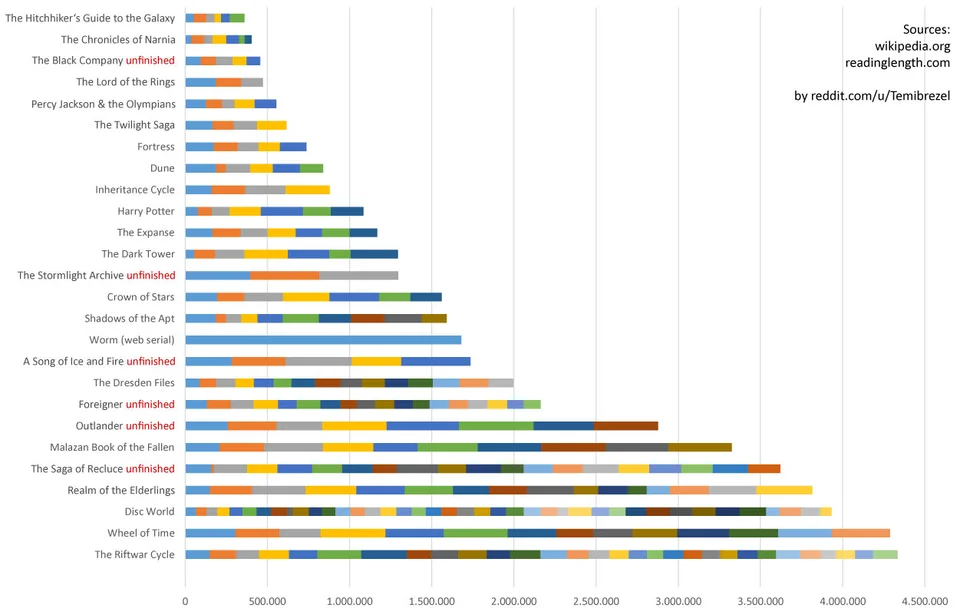
5 Things That Make A Great Fantasy Novel
With so much to consider when it comes to penning your fantasy story, the number one thing you need to do is grab your reader’s attention.
But fantasy readers have expectations, and there are five crucial things they all expect the fantasy novel to contain.
1. Magic Systems
This is such an important element because you can’t have a fantasy story with no magic.
From middle grade series, like Harry Potter, to the science fantasy, such as Star Wars, every well-loved fantasy story includes some kind of magic. So think carefully as to how yours works.
The good news is that you don’t have to stick to any preconceived ideas of what magic is.
Your characters don’t have to use wands. Maybe they are able to steal magic from others, or they’re on a quest to find it, or it arrives in a gift-wrapped box on their birthday. Maybe the magic is passed down through generations, or it only works for a day, or perhaps everyone in their community has a different ability.
Whatever you choose to do, the most important part of creating a magic system is that you are consistent and those reading your novel have a clear idea of how the magic works.
2. World Building
A fantasy novel is generally set in either a fictional universe or it’s full of magical elements intertwined in real life. I could write an entire article about fantasy world-building – but for now, I’ll stick to the basics.
When creating an imaginary world it’s fundamentally important to know everything about it. Changes are you won’t use 90% of your information, but to know it means your story will be more believable.
It doesn’t matter if your world is another planet, somewhere like Middle Earth, or our own world but with hidden supernatural portals – a believable world is what will keep readers hooked.
Connect with all five senses, think about who lives there, how that world functions, how your characters interact with it, and how to tie it into the story.
3. Complex Cast Of Characters
Whether your book features humans, supernatural entities, or mythical creatures, a good fantasy novel needs believable characters that readers can empathise with.
No one is going to relate to a blue-skinned werewolf who eats worms – but perhaps they will if that werewolf is trying to protect its young or has been rejected by a love interest.
So whatever your cast of characters looks like, make sure you add a little humanity to them so your readers still root for them.
4. The Quest
No fantasy novel is complete without the hero’s journey; your main character needs a challenge, a quest, a problem… because your book is about them trying to solve it. It’s as easy (and as complicated) as that.
Character development is key to all stories, but never more so than in this genre. So think about the character’s arc. Who they are before they set out on their mission should be very different to who they are when the quest has been fulfilled.
When writing a series, it always helps to know what will happen in the last book so that everything you are working towards comes together at the end.
Every book has a beginning, middle, and end – and the entire series should too. This means you may need one overarching theme for the series, with each book focusing on individual battles/quests/challenges ultimately leading to your character reaching their final goal.
5. Nemesis – Good Vs Evil
Every fantasy story needs a baddie or someone/something to rebel against and fear. That may be the government or king, it may be a physical monster, or perhaps even Satan himself.
A nemesis is a great foil character too. Their evil attributes should highlight the hero’s worthy attributes. Your main character should still be flawed, no one is perfect, but ultimately good must overcome evil.
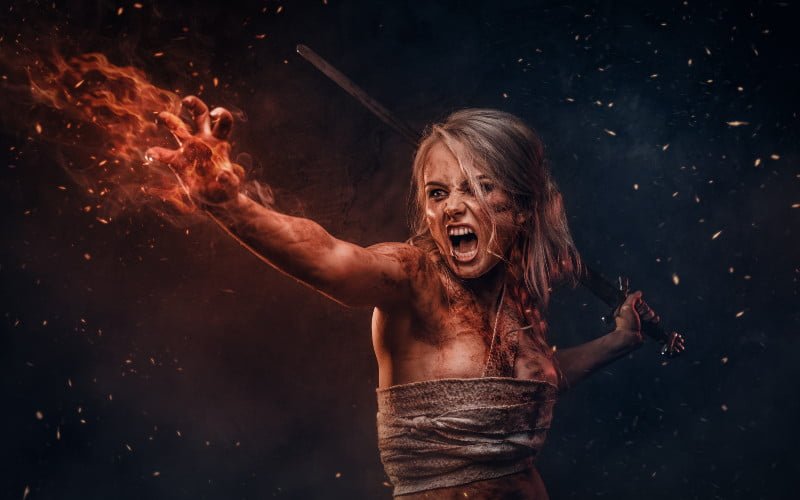
5 Things That Make A Fantasy Novel Bad
Many a novice writer makes the fundamental mistake of coming up with a great idea and jumping straight into the deep end of their book.
Fantasy stories need planning, research, and lots of time. The deeper you go, the stronger the story.
Here are some common mistakes.
1. Lack Of Consistency
When writing fantasy it’s a lot harder to write freely without having an end goal.
By all means, you can do that when you’re still at the exploration stage, but there are so many fantastical elements to keep track of (where your book is set, magical elements, character building, myths, monsters) that it’s too easy to confuse yourself.
When you confuse yourself, you confuse the reader. Or worse, they get bored and stop reading!
So make extensive notes about how your magic works, list key names and places, draw pictures and maps, create mood boards, and ensure you are consistent throughout.
2. Too Many / Not Enough Tropes
There are no consistent rules in writing, but readers of certain genres do expect to see the tropes they love.
If your fantasy story doesn’t have enough tropes, readers will be left disappointed. Likewise, if your fantasy characters are predictable and the book reads like a long list of unoriginal scenarios, that’s just boring. Try and get the balance right!
Popular Fantasy Tropes
- Damsel In Distress
- The Secret Heir
- Mistaken Identity
- Nemesis
- Dead Parents/Loved Ones.
- Dark Lord
- Training Sequences
- The Quest
- Good vs Evil
- Magic!
Mix it up and play about with tropes. Perhaps the damsel in distress rescues herself, or the monster is the good guy and the wise sage is not on the hero’s side, or the hero IS the Dark Lord.
3. No Visuals
Fantasy readers love to be thrown into a magical world they’ve never encountered before – but sometimes it’s hard to imagine it. This is why fan art is so popular in this genre.
A good fantasy book needs a great cover designer (this goes for self-publishing as well as traditional) and if possible a map of your kingdom(s). Even if the diagrams and pictures are just on your author website. Many great books include visuals that look like medieval maps – personally, I love them even more if the sea includes giant squid!
4. Prejudice
Fantasy authors are often influenced by the classics, but a lot of prejudice can be found in older books that readers (quite rightly) don’t want to read today.
This is where beta readers and sensitivity readers come in.
Be careful when explaining characteristics and skin colour, even having the bad guy wearing black and the good guy wearing white can be problematic. Also be careful about cultural appropriation in terms of setting, characteristics, customs, and attributes.
5. Bad Pacing
A good fantasy story needs to keep you hooked from the beginning to the very end. That means your pacing needs to be right.
Fantasy stories need to show the following, in this order:
Set the scene (What is the hero’s life like? What does they have to lose?)
Show the inciting incident (What is the challenge they have been set?)
Step into another world (Sometimes literally, sometimes in terms of a new experience or journey)
Introduce new characters (Companion, nemesis, wise sage etc)
Face challenges and obstacles… (Training, battles, monsters)
…interspersed with calmer moments (Introspection, dialogue, romance scenes, false hope)
Lose it all (Someone dies, the hero fails, they no longer want to carry on)
Find courage (Draw from what they have learned on their journey, help from unexpected places)
Achieve their goal (Beat the baddie, find the treasure, rescue their love, save the world)
Return home a changed person (Here we must see how the hero has changed and also mirror the opening scene)
If you dwell too long on any of these scenes or rush past any crucial steps, the story will lose its flow. No one wants to read a battle scene that lasts for 5 chapters or read 300 pages building up to a kiss that never happens.
So consider pacing when plotting your novel and ensure everything happens at exactly the right time, for exactly the right amount of time.
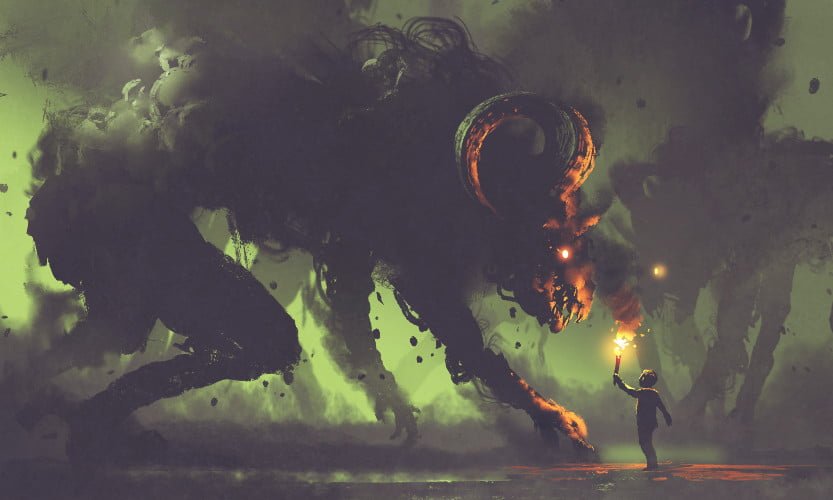
Frequently Asked Questions
What Are The 5 Elements Of Fantasy?
- Magic System
- World Building
- Complex Characters
- The Quest
- Good vs Evil
How Do You Write A Fantasy Character?
Fantasy characters need to be larger than life, which means you can really go to town and be inventive.
- Give characters creative/unusual names.
- Give them interesting skills or powers.
- Make sure they are all different to one another (what characteristics do they have that make them unique?)
- Ensure that by the end of the book they have changed/learned a lesson.
- Don’t be cliche or prejudiced when describing culture, physical features, and customs.
- If they are not human, ensure they still have some humanity to them so readers can empathise and relate.
- Make your hero likeable – even if they are flawed. We need to want them to win!
What Is A Fantasy Example?
The dictionary definition of ‘fantasy’ is:
- The creative imagination; unrestrained fancy.
- To imagine; visualise.
- An unnatural or bizarre mental image; illusion; phantasm.
In other words, fantastical literature involves any type of person, magic, or world that couldn’t/doesn’t exist in our own known reality; magical powers, monsters and creatures from your own imagination, everyday things/people/animals doing things they don’t normally do (growing, talking, floating) and worlds that are unlike our own.
When writing fantasy, the possibilities are endless!
Time To Get Writing
If you have managed to get to the end of this very long article then congratulations, you are now ready to tackle your fantasy novel or short stories like a pro.
I hope you found it useful. Good luck and have fun – a whole new magical world of novel writing awaits you!
Jericho Writers is a global membership group for writers, providing everything you need to get published. Keep up with our news, membership offers, and updates by signing up to our newsletter. For more writing articles, take a look at our blog page.



